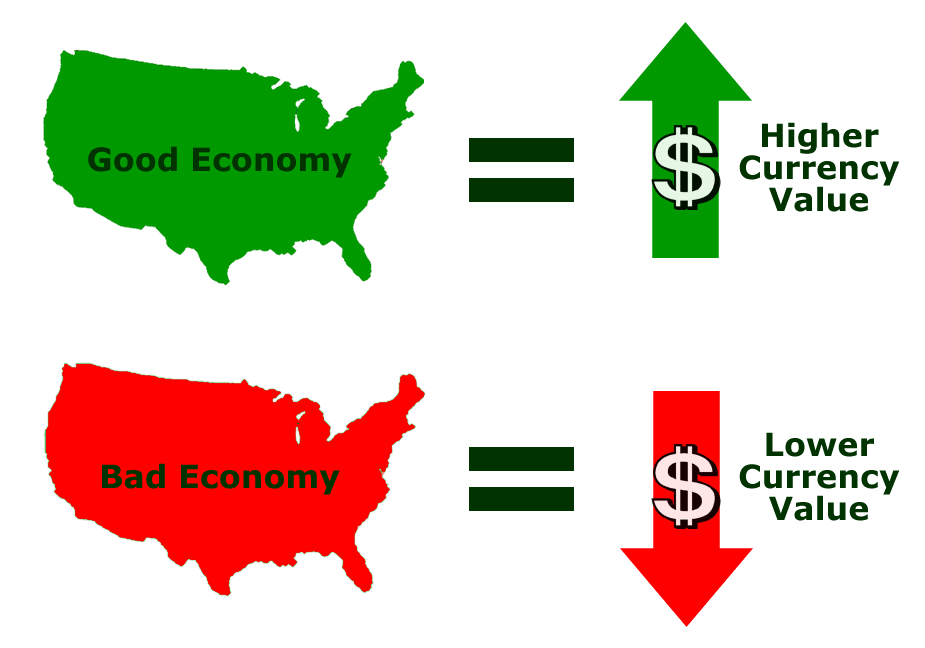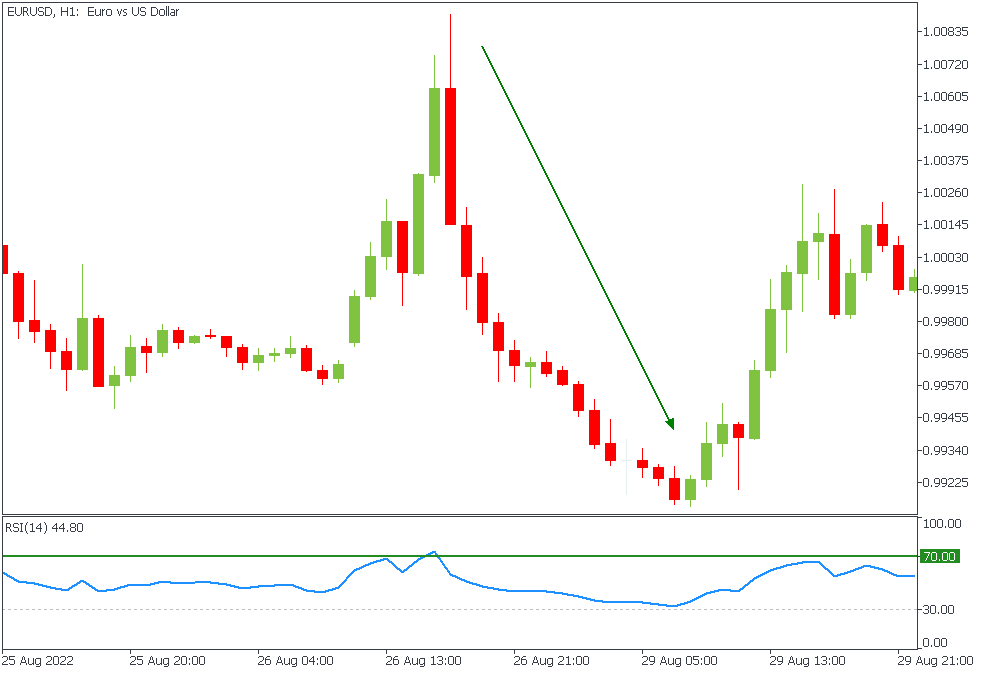Let’s study what the Forex fundamental analysis is and how to use it in trading stocks and currency pairs. We’ll go through the basics of fundamental analysis to some advanced techniques, be ready to level up!
What is fundamental analysis?
Before delving into the key elements of fundamental analysis, let us define the meaning of this word combination. Fundamental analysis is a study of the underlying factors that drive the market. This type of analysis is based on economic data, news events, and earnings reports.
Types of fundamental analysis
As a trader, you may come across the terms “Qualitative” and “Quantitative” fundamental analysis. Let us explain them to you in simple terms.
Qualitative Fundamental Analysis
Qualitative fundamental analysis is a type of analysis that examines non-numeric data such as company management, industry trends, and macroeconomic factors that affect a company's growth potential. This type of analysis involves researching the quality of a company's products and services, analyzing consumer behavior and preferences, and evaluating the company's brand reputation.
An example might be looking at a company's management team and their experience and track record. A trader might analyze the company to see if their managers have a history of successful business ventures or if they have any red flags, such as a history of bankruptcies or legal trouble. This analysis would be qualitative because it involves subjective judgment rather than objective data.
Quantitative Fundamental Analysis
Quantitative fundamental analysis, on the other hand, involves analyzing numeric data such as financial statements, balance sheets, and income statements to determine the financial health of a company. This type of analysis involves evaluating a company's revenue, earnings, cash flow, and other financial metrics to determine its intrinsic value.
An example would be taking a company's financial statements, such as its balance sheet or income statement, and analyzing them. The company's revenue growth, profit margins, debt levels, or other financial metrics determine whether the company is undervalued or overvalued.
Overall, both analysis types are important for traders and investors. You cannot just simply rely on a management team of professionals and don’t make any objective financial analysis. On the contrary, it wouldn’t be sufficient to look only at numbers and not at the team behind them.
Factors of Fundamental Analysis
There are many different factors that traders can use in their fundamental analysis, depending on whether they analyze stocks or currency pairs. Here are some of the most important factors to consider:
- Economic data: This includes data such as inflation rates, GDP growth, and employment figures, which can provide insight into the overall health of an economy.
- News events include announcements by central banks, geopolitical developments, and other news that can impact financial markets.
- Earnings reports: For stock traders, earnings reports can be a key factor in fundamental analysis, as they provide insight into a company's financial health and prospects. The Forex market doesn’t have earnings reports.
- Industry trends: Traders may also look at broader trends within a particular industry, such as shifts in consumer behavior or technological developments, to better understand upcoming movements in any instruments.
- Political developments: Political factors, such as changes in government policy or regulatory shifts, can also impact financial markets and should be considered in fundamental analysis. Trade wars, geopolitical tensions, and other events are a part of political changes and usually have a huge impact on the price.
Forex fundamental analysis
When a person trades Forex, they consider the dynamics of economic indicators such as inflation, interest rates, retail sales, jobs data, etc. All these economic reports are gathered in the economic calendar. News events include announcements of central bank governors; discussions of intercountry issues, for example, Brexit; replacements of government members, monetary policy changes, and more. While you can predict some news, it won’t work every time – in this case, traders have to adjust to the new situation.
How to trade on the news?
A challenge of fundamental analysis is to learn how to interpret changes in economic data and speeches of authorities. We will explain to you in more detail how the changes in economic data influence currency exchange rates in the next lesson. Remember the key logical rule below.
- A domestic currency will rise if a country’s economic data improves and beats expectations.
- In the opposite, if a country’s economic data comes out worse than expected, a domestic currency will fall.
As you trade currency pairs in which two currencies are involved, you use fundamental analysis to compare the economies of these countries. Whichever is stronger, the currency of that will rise versus the other one.

Forex fundamental analysis tools
Economic calendar, also known as FX Calendar, is a tool that allows traders to make the fundamental analysis of financial markets based on economic news. That is – you will be able to see macroeconomic events that move the market and make Forex trading decisions based on the data.
It’s the most important forex fundamental analysis tool that you can use daily in your trading. Check the economic calendar to find out what is coming for the market and how to trade news in forex.
Another great tool for fundamental analysis is the currency strength meter. The Currency Strength Meter compares every cross between major currencies (USD, GBP, EUR, CHF, JPY, CAD, NZD, and AUD) and comes up with a relative currency strength.
It serves as a valuable economic indicator that provides insight into a country's financial health and economic stability. Banks even use this data to make decisions on monetary policy. Check our article about currency strength.
Stock fundamental analysis
When a person trades stocks, they base their expectations on earnings reports, which reveal how the company performed in the previous quarter. There are four earnings seasons a year, each lasting for several weeks. Earnings are released during the month which follows the quarter (January, April, July, and October). This is when you should check the earnings calendar to learn when to trade.
Earnings releases represent the perfect opportunity to diversify from currencies into stocks and benefit from the big price moves that will occur ahead, during the day, and after the earnings release. The price can jump or fall by tens of percent after these releases so traders can profit quickly from fundamental analysis of the stock market.
How to trade on earnings reports?
- If the financial report (quarterly or annual) shows that the company increased profit or sales, investors get interested in it. Demand for the company’s stocks rises, and their price goes up.
- If the company announces that its profit has declined, its stocks fall on the news.
The good news for TradeGlide traders is that they can trade stocks making both buy and sell trades. Thus, traders have a chance to profit in case of either outcome.
Fundamental Analysis Importance
Fundamental analysis is an essential tool for traders and investors to evaluate the intrinsic value of an asset. Fundamental analysis helps traders make informed decisions about buying, holding, or selling securities by analyzing the underlying factors that drive the market. Here are some key reasons why fundamental analysis is important:
- Understanding the financial health of a company or a whole country to decide what stock or currency is worth it and what doesn’t.
- Identifying market trends and taking part in them. A trend is always a friend, so you may enjoy a huge price swing and perform a fantastic trade by successfully identifying it.
- Long-term investment strategies that won’t give you money instantly but make you more over time.
Example of Fundamental Analysis
A trader can conduct a fundamental analysis, including inflation rates, employment data, central bank interest rate decisions, and trade balances. By analyzing these factors, a trader can better understand the underlying economic conditions that affect currencies.
For example, EURUSD fell after positive data for the US economy, as in the figure below. By analyzing fundamental data, you can forecast how new releases will affect the price and be ready for the movement.

Conclusion
There are thousands of factors that influence the exchange rates, so many that you may become dizzy struggling to analyze all of them at once. But don’t worry! We are always ready to help you. We do hope that with our tutorial, you will quickly learn everything you need about Forex fundamental analysis. OK, we won’t trouble you with loose talk anymore. Let us get down to business.
We told you the bare truth: many economic indicators may influence the currency’s price. Fortunately, the list can be narrowed down to a few key indicators (they are dubbed the “market movers”). For the sake of simplicity, we decided to split all of them into four groups. Look at them in the next lesson, Fundamental factors.
Learn fundamental analysis with TradeGlide!








No comments:
Post a Comment